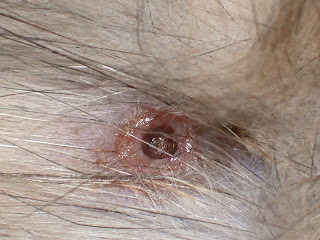The cooler evenings make it inviting to hang out on the porch or play in the yard with the kids before bed. That is, until you realize that you are being "eaten up" by those pesky mosquitoes. We are not done with mosquitoes for this season, and according to the CDC, as of last week, cases of West Nile Virus are up 25% from the week before. If this trend continues, this year could be the most severe outbreak on record in the United States. West Nile Virus was first detected in the United States in 1999 in New York City. The worst overall outbreak was in 2003 with 9,862 cases and 264 deaths. So far, this year's outbreak is 3 times the size of last year's.
As of September 4, 2012, there have been 1,993 cases reported, according to the CDC. Of those, 87 resulted in death. Reports have come from 48 states, with Alaska and Hawaii being the only states with no reports. The majority of cases (about 70%) have come from 6 states: Texas, South Dakota, Mississippi, Oklahoma, Louisiana, and Michigan. Texas has been hit the worst, accounting for about half of all reported cases. They have reported over 1,000 cases with 40 deaths. In Georgia, the CDC reports that we've had 16 neuroinvasive cases, 6 non-neuroinvasive cases, and 3 deaths.
Of the almost 2,000 cases reported this year, 54% have been of the neuroinvasive form of West Nile Virus, which can lead to meningitis (inflammation of the tissue that surrounds the spinal cord and brain) and encephalitis (inflammation of the brain). A milder form is more common and often not reported. In fact, 80% of people infected with the virus will have no symptoms at all. When symptoms are present, people may experience flu-like symptoms such as fever, headache, body aches, nausea, vomiting, swollen lymph glands, or a rash on the chest, stomach and back. These symptoms generally last a few days to several weeks but pass on their own with no lasting effects. However, 1 in 150 people infected with West Nile Virus will have the serious form of the virus. Symptoms include high fever, headache, neck stiffness, disorientation, tremors, coma, muscle weakness, vision loss, numbness and paralysis. Sometimes these effects may be permanent and even result in death.
 |
| photo courtesy of Jim Gathany/CDC; wikipedia.org |
West Nile Virus is spread by mosquitoes that have been infected by feeding on infected birds. The best way to prevent being infected is to prevent mosquito bites in the first place. The peak biting times for mosquitoes are dawn, dusk, and early evening, so stay indoors during these times if possible. Wear long sleeves and pants if you are outdoors, and use repellents according to the labels. You can also decrease the number of mosquitoes by eliminating their breeding grounds. Remove any standing water where mosquitoes can lay eggs. For further protection, Mid-Georgia Pest Control offers mosquito treatments to help control the mosquito population in your yard. For more information, call us today at (770)962-4240.














